Materiálem ovlivněná osteoindukčnost
The biomaterials which currently are utilized in the majority of tissue engineering approaches function to provide mechanical support and/or deliver cells to a desired anatomic site. However, they are not designed to specifically interact with desired cell populations and guide the resultant structure and function of engineered or regenerated tissues. We are testing newly developed materials which could be used for new implant design and which provide several different types of information to cells in their environment, and thus mimic functions of the native extracellular matrices found in tissues.
A variety of types of information may be conveyed to cells from the biomaterial. The specific mechanism of cell adhesion to a material (e.g., specific nanotopography or ligand-cell receptor bonds) may be designed onto a material to promote a specific pattern of gene expression in the adherent cells and thus guiding the cellular fate. In addition, specific combinations or sequences of growth factors may be bind to our materials to affect local cell populations, and drive various processes such as migration, proliferation or differentiation.
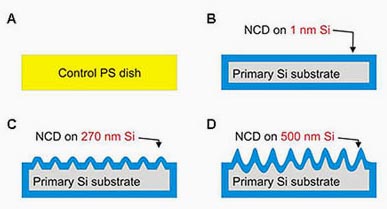
Schematic drawing of used strategy for growing NCD film on Si wafer.
Control tissue culture polystyrene (A) and NCD films deposited on flat (RMS 1 nm)
(B), polished (RMS 270 nm) (C) and lapped (RMS 500nm) (D) silicon substrate.
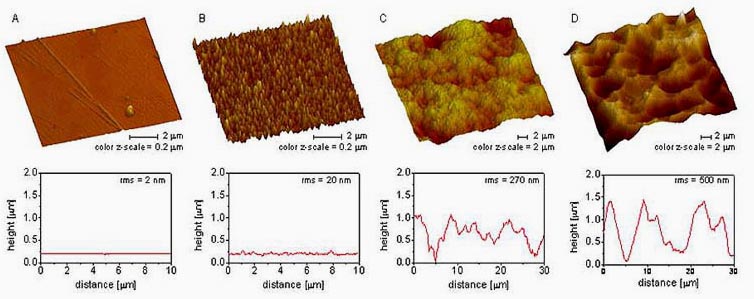 AFM images and determined roughness of NCD films on Si wafer.
A - control tissue culture polystyrene, B - NCD sample of RMS 20 nm, C - NCD sample
of RMS 270 nm, D - NCD sample of RMS 500 nm
AFM images and determined roughness of NCD films on Si wafer.
A - control tissue culture polystyrene, B - NCD sample of RMS 20 nm, C - NCD sample
of RMS 270 nm, D - NCD sample of RMS 500 nm
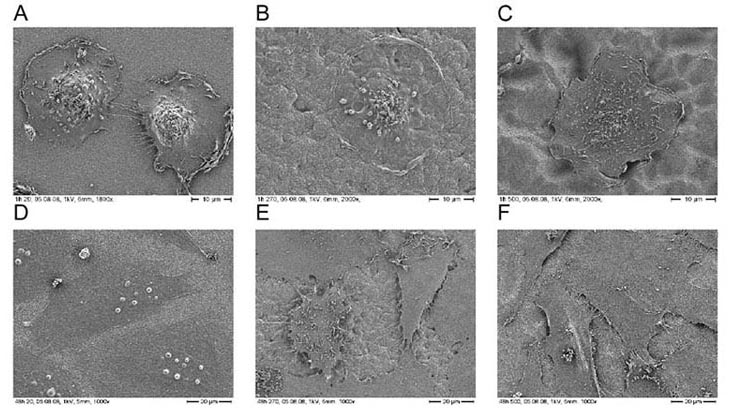 SEM images of SAOS-2 cultivated for 1 h (A-C)
and 48 h (D-F) on differently patterned NCD films ( A, D - RMS 20 nm,
B, E - RMS 270 nm, C, F - RMS 500 nm).
SEM images of SAOS-2 cultivated for 1 h (A-C)
and 48 h (D-F) on differently patterned NCD films ( A, D - RMS 20 nm,
B, E - RMS 270 nm, C, F - RMS 500 nm).
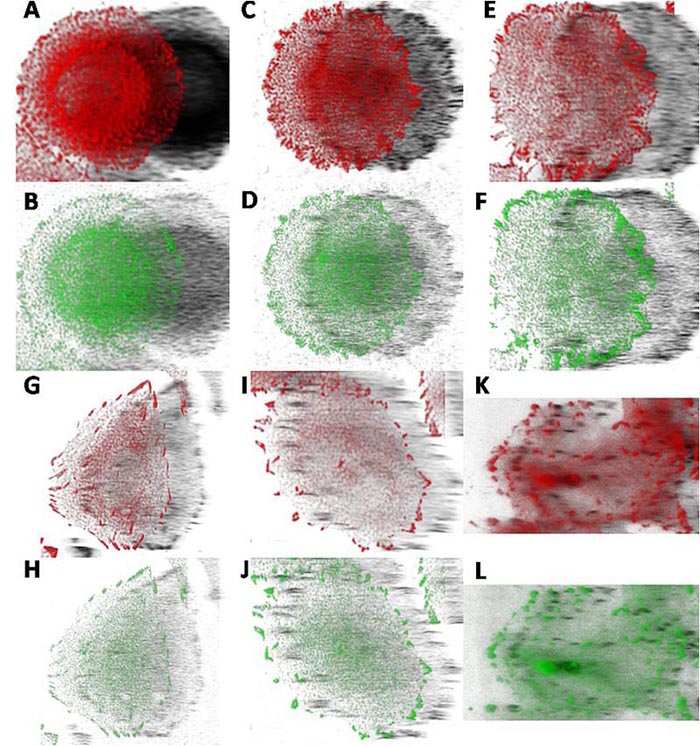 Fluorescence images of vinculin (red) and pTyr397
FAK (green) present in SAOS-2 cells cultivated for 1 h (A-F) and for
48 h (G-L) on differently patterned NCD films ( A, B, G, H - RMS 20 nm,
C, D, I, J - RMS 270 nm, E, F, K, L - RMS 500nm).
Fluorescence images of vinculin (red) and pTyr397
FAK (green) present in SAOS-2 cells cultivated for 1 h (A-F) and for
48 h (G-L) on differently patterned NCD films ( A, B, G, H - RMS 20 nm,
C, D, I, J - RMS 270 nm, E, F, K, L - RMS 500nm).
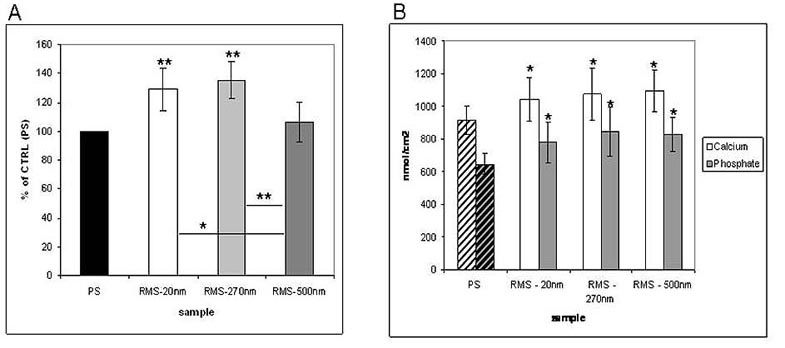 Alkaline phosphatase (ALP) activity of SAOS-2 cells cultivated
on differently patterned NCD films for 11 days in differentiating medium (A).
Cellular content of calcium and phosphate in SAOS-2 cells cultivated on differently
patterned NCD films for 15 days in differentiating medium (B) *p<0.05, ** p<0.01
Alkaline phosphatase (ALP) activity of SAOS-2 cells cultivated
on differently patterned NCD films for 11 days in differentiating medium (A).
Cellular content of calcium and phosphate in SAOS-2 cells cultivated on differently
patterned NCD films for 15 days in differentiating medium (B) *p<0.05, ** p<0.01
